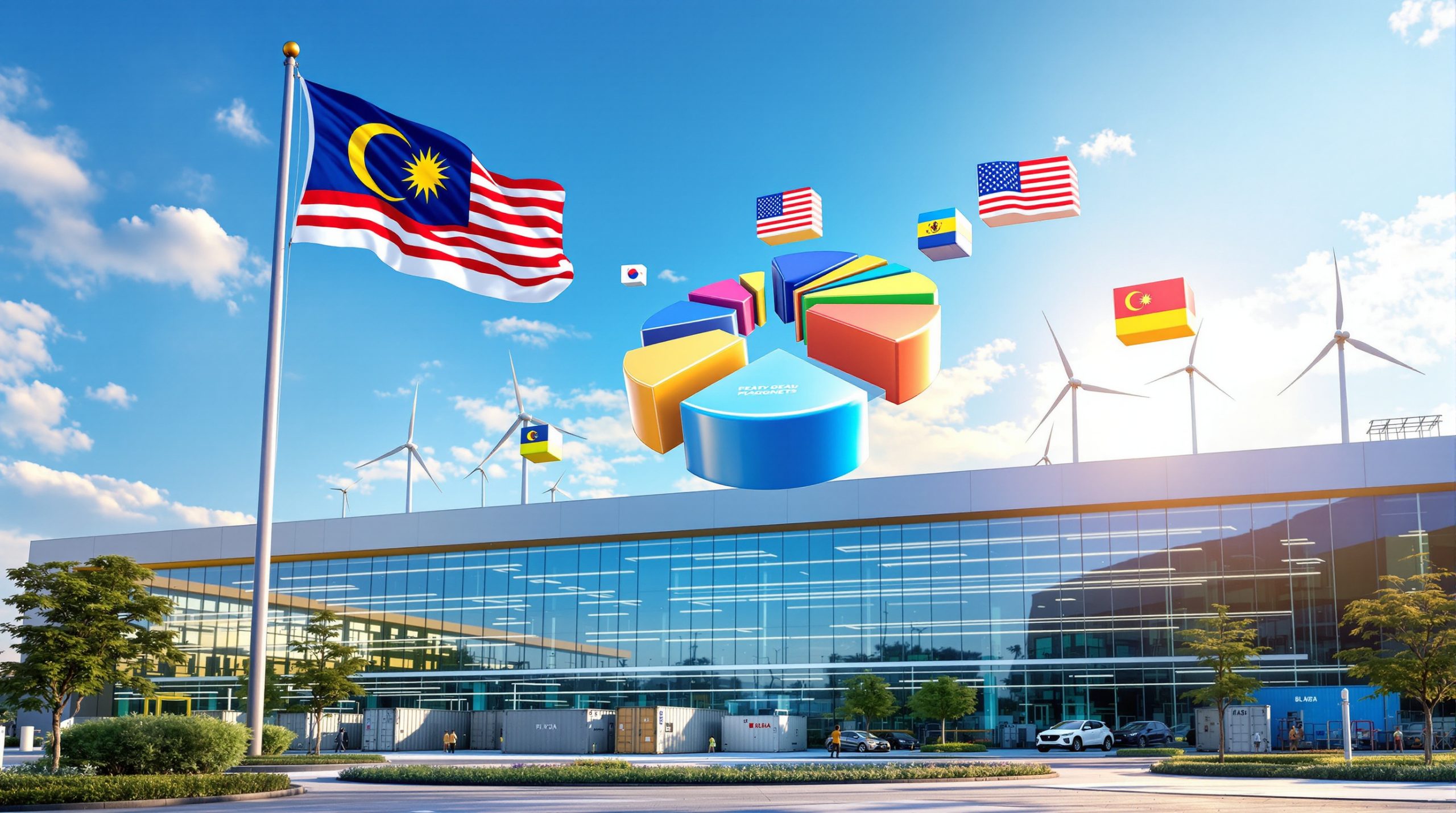Understanding the Critical Minerals Alliance Framework
The global landscape of strategic resource management has undergone a fundamental transformation, with Western nations abandoning traditional free-market approaches in favour of coordinated intervention strategies. The Critical Minerals Alliance represents this seismic shift in how democratic nations approach supply chain security for essential materials that power everything from smartphones to military defence systems. Furthermore, this strategic pivot directly addresses energy transition security concerns across allied nations.
Defining the Critical Minerals International Alliance
The Critical Minerals Alliance functions as an industry-led international coalition designed to address the strategic vulnerabilities inherent in current global supply chains. This framework encompasses multiple national organisations including the Critical Minerals Association of Australia, the United Kingdom, and the United States, all working toward a unified objective of reducing dependence on concentrated mineral production networks.
The alliance operates through a distributed governance model that allows member nations to coordinate policy while maintaining sovereign control over domestic mineral resources. Unlike traditional trade agreements, this framework prioritises strategic security over pure economic efficiency, marking a departure from decades of globalisation-focused resource policies.
Recent developments have accelerated the alliance's formation, particularly following statements from senior government officials about the necessity of non-market interventions. However, Trump's critical order has further highlighted the urgency of coordinated action among Western allies. U.S. Energy Secretary Chris Wright's declarations at the G7 Energy Ministers meeting in Toronto highlighted the strategic imperative for coordinated action, stating that traditional market mechanisms alone cannot address China's dominance in critical mineral processing.
Core Objectives and Strategic Priorities
The Critical Minerals Alliance operates on three foundational pillars: supply chain resilience, sustainable mining practices, and international policy coordination
The alliance's strategic framework centres on proactive policy engagement across member nations, creating synchronised approaches to mineral security challenges. This coordination extends beyond simple trade facilitation to encompass comprehensive industrial policy alignment, regulatory harmonisation, and joint investment mechanisms.
Innovation ecosystem development represents another critical priority, connecting industry capabilities with government resources and academic research institutions. This tri-sector approach enables rapid technology transfer and accelerated development of alternative processing methods that can compete with established Chinese operations.
Best practices standardisation forms the third pillar, establishing common environmental and social governance criteria for responsible extraction. These standards ensure that alternative supply chains maintain ethical mining practices while achieving strategic security objectives. In addition, this approach aligns with Australia's strategic reserve development initiatives.
Addressing Supply Chain Vulnerabilities Through Strategic Coordination
Geographic concentration in critical mineral production has created unprecedented strategic vulnerabilities for Western economies and defence systems. Understanding these risks requires examining both the scale of current dependencies and the technical challenges involved in establishing alternative supply networks.
Geographic Concentration Risks
Current market concentration reveals alarming dependencies across multiple critical materials essential for modern technology and defence applications:
| Mineral | China's Processing Share | Primary Alternative Producers | Strategic Risk Level |
|---|---|---|---|
| Rare Earth Elements | 85-90% | USA (MP Materials), Australia | Extreme |
| Graphite (Battery Grade) | 70-75% | Madagascar, Mozambique | High |
| Lithium Processing | 60-65% | Chile, Australia, Argentina | Medium-High |
| Cobalt Refining | 70-80% | Democratic Republic of Congo | High |
| Tungsten | 80-85% | Russia, Canada | Extreme |
These concentration levels create single-point-of-failure scenarios across global manufacturing networks. The semiconductor industry, electric vehicle production, and renewable energy infrastructure all depend on materials processed predominantly in facilities controlled by potentially adversarial nations.
China's processing dominance extends beyond raw extraction to encompass the entire value chain, including separation technologies, metallisation processes, and component manufacturing. This vertical integration creates dependencies that cannot be resolved simply by diversifying mining operations without corresponding investments in downstream processing capabilities.
Strategic Diversification Initiatives
Alternative processing facility development represents the most critical component of supply chain diversification efforts. The alliance has identified specific gaps in Western processing capacity that require immediate attention:
• Rare earth separation facilities: Current non-Chinese capacity can process less than 15% of global demand
• Battery precursor production: Lithium hydroxide and cobalt sulfate processing remains heavily concentrated in Asia
• Specialty metal refinement: High-purity materials for defence applications lack redundant production sources
• Magnet manufacturing: Permanent magnet production capabilities exist primarily in China and Japan
Secondary supply chain establishment focuses on recycling infrastructure that can reduce primary material dependencies. Urban mining initiatives targeting electronic waste, end-of-life batteries, and industrial scrap represent significant opportunities for material recovery, though current recycling rates remain below 5% for most critical minerals.
Recycling infrastructure expansion programmes aim to capture materials from decommissioned wind turbines, electric vehicle batteries, and consumer electronics. However, the economics of these operations require government support to compete with low-cost primary production, particularly given the energy-intensive nature of most recycling processes.
G7 Nations and Critical Minerals Security Architecture
The relationship between government-led initiatives and industry coalitions has evolved into a complex framework of coordinated intervention strategies. The Minerals Security Partnership and related government programmes provide the policy foundation that enables private sector investment in strategically important but economically challenging projects.
The Minerals Security Partnership Connection
The Minerals Security Partnership operates as a complementary government-level initiative that provides diplomatic and financial backing for Critical Minerals Alliance objectives. This partnership creates coordinated investment strategies across allied nations, pooling resources to support projects that individual countries might not pursue independently.
Joint stockpiling mechanisms represent a significant departure from traditional resource management approaches. Member nations are establishing strategic reserves of critical materials, coordinating purchases to avoid market disruption while ensuring adequate supplies during potential supply interruptions.
The partnership also facilitates intelligence sharing regarding global mineral markets, enabling member nations to anticipate and respond to potential supply disruptions before they impact industrial operations. This early warning system extends to monitoring geopolitical developments that could affect mineral access.
Recent Policy Developments and Industrial Strategy Shifts
Western nations are increasingly adopting interventionist policies to counter concentrated supply chains, marking a shift from traditional free-market approaches to strategic resource management. The U.S. Defence Department's equity stake in MP Materials exemplifies this transformation, representing direct government participation in private mineral operations.
Government-backed industrial policy emergence spans multiple sectors, with critical minerals serving as the foundation for broader manufacturing renaissance initiatives. These policies include:
- Direct subsidies for domestic processing capacity expansion
- Tax incentives for critical mineral recycling operations
- Preferential procurement policies favouring allied suppliers
- Research and development funding for alternative processing technologies
- Export controls on critical mineral processing equipment and technology
Movement away from pure market-based approaches reflects recognition that strategic materials cannot be treated as ordinary commodities. The national security implications of mineral dependencies require government intervention to ensure supply security, even when such intervention conflicts with economic efficiency principles.
Essential Elements for Future Technology Applications
The materials that power emerging technologies represent both the greatest opportunities and the most significant vulnerabilities in global supply chains. Understanding which minerals are most critical for future applications helps prioritise alliance investment and policy attention.
Essential Elements for Clean Energy Transition
The clean energy transition depends on secure access to specific materials that currently lack diverse supply sources:
• Lithium: Battery manufacturing and energy storage systems require high-purity lithium compounds, with demand projected to increase five-fold by 2030
• Cobalt: High-performance battery cathodes depend on cobalt for thermal stability and energy density, though recycling initiatives aim to reduce primary demand
• Nickel: Electric vehicle battery production increasingly utilises high-nickel cathode chemistries to improve range and reduce costs
• Graphite: Anode materials for lithium-ion batteries require specific graphite grades that undergo extensive purification processes
These materials face unique supply chain challenges beyond simple geographic concentration. Lithium extraction requires extensive water resources and long development timelines, while cobalt mining involves significant social and environmental concerns in primary producing regions.
The quality specifications for battery-grade materials demand sophisticated processing capabilities that cannot be easily replicated. Lithium carbonate must achieve 99.5% purity levels, while battery-grade graphite requires spheroidisation processes that add significant technical complexity to production.
Defence and Advanced Technology Applications
Rare earth elements enable precision manufacturing for defence systems, with specific materials required for laser guidance systems, radar components, and electronic warfare capabilities. The unique magnetic and optical properties of individual rare earth elements cannot be substituted, creating absolute dependencies on secure supply sources.
Specialty metals for aerospace and defence systems include:
• Titanium: Aerospace applications require specific alloy compositions and processing standards
• Rhenium: Superalloy applications for jet engines depend on this extremely rare metal
• Beryllium: Nuclear applications and specialised electronics utilise beryllium's unique properties
• Hafnium: Semiconductor manufacturing and nuclear control applications
Semiconductor-grade materials represent perhaps the most technically challenging aspect of critical mineral supply chains. The purity requirements for semiconductor applications exceed 99.9999% for many materials, demanding specialised facilities and extensive quality control processes that cannot be rapidly established.
Investment Flows and Market Transformation
The financial mechanisms supporting critical mineral supply chain diversification represent a fundamental restructuring of investment criteria and risk assessment. Government involvement has altered traditional project economics, creating new opportunities while introducing additional complexity for private investors.
Government-Backed Financing Mechanisms
Direct subsidies for domestic processing capacity have emerged as the primary tool for attracting private investment to strategically important projects. The U.S. Inflation Reduction Act allocated over $370 billion for clean energy initiatives, with significant portions directed toward critical mineral processing operations.
Preferential procurement policies create guaranteed markets for alternative suppliers, reducing demand risk for new operations. Government agencies commit to purchasing specified quantities of materials from approved suppliers, even when costs exceed market prices for conventional sources.
Risk mitigation through public-private partnerships enables projects that would not attract private investment under normal market conditions. Government entities provide loan guarantees, equity investments, or offtake agreements that reduce financial risk while maintaining private sector operational control.
Private Sector Response and Market Dynamics
Investment criteria evolution extends beyond pure profitability to incorporate strategic value and supply chain security benefits. Private investors now evaluate projects based on their contribution to national security objectives, recognising that government support can justify investments in otherwise marginal operations.
Consequently, this shift has influenced mining industry trends toward strategic alignment with government objectives. A hypothetical scenario illustrates these dynamics: a lithium processing facility located in a politically stable allied nation might receive investment despite higher operating costs compared to Chinese alternatives, based on the strategic value of supply diversification and government support mechanisms that improve project economics.
Environmental, social, and governance considerations increasingly influence supply chain selection as companies recognise reputational risks associated with problematic sourcing. The alliance framework provides a mechanism for ensuring that alternative suppliers meet acceptable ESG standards while achieving strategic objectives.
Implementation Challenges and Technical Barriers
Establishing alternative critical mineral supply chains involves overcoming significant technical, economic, and coordination challenges that have contributed to current concentration patterns. These barriers explain why market forces alone have proven insufficient to create supply diversification.
Technical and Infrastructure Barriers
Processing capacity gaps in non-Chinese facilities represent the most immediate challenge for supply chain diversification. Current Western facilities lack the scale and technical capabilities required to process significant volumes of critical materials to required specifications.
The technical complexity of rare earth separation exemplifies these challenges. Separating individual rare earth elements requires sophisticated solvent extraction processes utilising specific chemical reagents and precise temperature controls. Establishing new separation facilities requires extensive technical expertise that currently exists primarily within Chinese operations.
Technology transfer limitations create additional barriers, as much of the processing knowledge exists as proprietary industrial processes rather than publicly available technology. Intellectual property concerns prevent sharing of critical technical information, requiring independent development of processing methods.
Timeline mismatches between policy goals and industrial development create unrealistic expectations for supply chain transformation. Establishing new processing facilities typically requires 5-7 years from initial planning to commercial operation, while policy objectives often assume much shorter implementation timelines.
Economic and Political Considerations
Cost competitiveness remains the fundamental challenge for alternative suppliers. Chinese operations benefit from decades of optimisation, vertical integration, and scale economies that new facilities cannot immediately match. Government subsidies can bridge this gap temporarily, but long-term sustainability requires achieving competitive operating costs.
Coordination challenges across different regulatory frameworks complicate multinational projects essential for achieving sufficient scale. Environmental regulations, labour standards, and investment approval processes vary significantly among alliance nations, creating delays and additional costs for cross-border initiatives.
Balancing environmental standards with production urgency creates policy tensions that must be resolved to enable rapid capacity expansion. Accelerated permitting processes risk compromising environmental protection, while maintaining rigorous standards may delay critical projects beyond strategic timelines.
Australia's Strategic Position in Global Mineral Networks
Australia's unique combination of abundant mineral reserves, established mining infrastructure, and strong alliance relationships positions the country as a cornerstone of Western supply chain diversification efforts. The nation's role extends beyond raw material supply to encompass downstream processing and technological development.
Australia's Strategic Advantages
Australia possesses significant reserves of multiple critical elements, including lithium, rare earths, cobalt, nickel, and tungsten. The diversity of mineral resources reduces dependence on multiple countries for different materials, enabling integrated supply chain development within a single jurisdiction.
Established mining infrastructure provides the foundation for rapid capacity expansion. Existing transportation networks, port facilities, and regulatory frameworks enable faster project development compared to greenfield operations in less developed mining regions.
Strong alliance relationships with key consuming nations create political support for Australian mineral development. The ANZUS treaty, Five Eyes intelligence sharing, and comprehensive trade agreements provide diplomatic backing for resource development initiatives.
Bilateral Framework Agreements
Australia's critical minerals agreements with major partners demonstrate the integration of resource development with strategic alliance objectives:
| Partner Nation | Agreement Type | Key Provisions | Investment Commitments |
|---|---|---|---|
| United States | Strategic Partnership | Technology sharing, joint R&D | $250 million DOE funding |
| Japan | Supply Chain Resilience | Offtake agreements, processing investment | $2 billion private sector |
| European Union | Strategic Partnership | Green transition materials | €1.5 billion development fund |
| South Korea | Minerals Security | Battery materials focus | $1.8 billion LG Energy |
Investment facilitation mechanisms within these agreements include streamlined permitting processes, tax incentives for approved projects, and government-backed financing for strategic initiatives. These mechanisms reduce investment risk while accelerating project development timelines.
Joint research and development initiatives focus on processing technology advancement, recycling capabilities, and alternative extraction methods. Australia's mining universities and research institutions collaborate with international partners to develop innovative approaches to mineral processing and utilisation.
Future Evolution of Critical Minerals Alliances
The trajectory of critical minerals alliances reflects broader geopolitical realignment toward regionalised, politically-aligned supply networks. Understanding these trends helps stakeholders anticipate market evolution and investment opportunities over the coming decade.
Emerging Trends and Market Evolution
Integration of recycling into primary supply chains represents a significant opportunity for reducing import dependencies. Advanced recycling technologies can recover critical materials from electronic waste, industrial scrap, and end-of-life products at increasingly competitive costs.
Technological advancement in processing efficiency offers pathways to cost competitiveness with established operations. Innovations in separation chemistry, automation systems, and energy utilisation can reduce operating costs while improving environmental performance.
Regional hub development strategies aim to create integrated processing clusters that achieve scale economies while maintaining supply diversification. These hubs combine mining operations, processing facilities, and manufacturing capabilities within politically stable regions.
Furthermore, Greenland strategic minerals represent an emerging frontier for alliance supply chain expansion, though development challenges remain significant.
Long-term Strategic Implications
The shift toward alliance-based mineral security represents a fundamental change from globalised supply chains to regionalised, politically-aligned networks
This transformation has profound implications for global trade patterns, potentially reducing economic efficiency while improving strategic security. The costs of supply chain diversification must be balanced against the benefits of reduced vulnerability to supply disruptions.
Impact on developing nation resource exporters varies significantly based on political alignment and governance quality. Nations aligned with Western alliance systems may benefit from increased investment and preferential access, while others may find themselves excluded from certain supply chains.
The emergence of competing alliance systems could create parallel global supply chains based on geopolitical alignment rather than economic efficiency. This bifurcation represents a fundamental departure from post-Cold War globalisation assumptions. The G7's critical minerals production alliance exemplifies this strategic realignment.
Frequently Asked Questions About Alliance Structure
How many countries participate in critical minerals alliances?
The Critical Minerals Alliance encompasses over a dozen nations through various bilateral and multilateral frameworks, including all G7 members plus Australia, South Korea, and several European nations outside the G7.
What is the difference between CMIA and MSP?
The Critical Minerals International Alliance operates as an industry-led coalition focusing on private sector coordination, while the Minerals Security Partnership represents a government-level diplomatic initiative providing policy and financial support.
Which minerals are considered most critical for national security?
National security priorities focus on rare earth elements for defence electronics, lithium and cobalt for energy storage systems, and specialty metals like tungsten and titanium for aerospace and defence applications.
How do alliance members coordinate investment decisions?
Coordination occurs through regular ministerial meetings, joint investment committees, and shared intelligence regarding market developments and supply risks. Member nations align their domestic policies and investment incentives to support alliance objectives.
What role do environmental standards play in alliance supply chains?
Environmental, social, and governance criteria serve as minimum standards for alliance-approved suppliers, ensuring that alternative supply chains maintain ethical and sustainable practices while achieving strategic objectives.
Key Considerations for Stakeholders
The transformation of critical mineral markets creates new opportunities and challenges for various stakeholder groups. Understanding these implications enables better decision-making in an evolving strategic landscape.
Investment Community Considerations
Five key factors for evaluating critical minerals investments in the alliance era:
- Government support mechanisms: Assess availability of subsidies, loan guarantees, and preferential procurement agreements
- Strategic alignment: Evaluate project contributions to alliance supply chain objectives and likelihood of continued policy support
- Technical feasibility: Analyse processing technology requirements and availability of necessary expertise and equipment
- ESG compliance: Ensure operations meet alliance environmental and social governance standards
- Market positioning: Consider competitive advantages from government support versus long-term economic sustainability
Risk assessment frameworks must incorporate geopolitical factors alongside traditional commercial risks. Projects may succeed with government support despite challenging economics, while economically attractive projects may face political obstacles.
Due diligence processes require enhanced analysis of regulatory environments, policy stability, and international trade relationships. Investment decisions increasingly depend on understanding alliance dynamics and strategic priorities.
Policy and Industry Implications
Regulatory landscape transformation creates both opportunities and compliance challenges for mineral industry participants. Companies must navigate evolving requirements while positioning themselves to benefit from government support programmes.
Supply chain restructuring requirements affect manufacturers across multiple industries, from automotive to electronics to defence. Companies must evaluate their supply sources and consider diversification strategies that align with alliance objectives.
Innovation priorities for competitive advantage focus on processing efficiency, recycling capabilities, and alternative materials development. Research and development investments should align with alliance strategic priorities to access government funding and support.
The evolution toward alliance-based mineral security represents one of the most significant shifts in global resource management since the end of the Cold War. Success in this new environment requires understanding both the strategic imperatives driving change and the practical challenges of implementing alternative supply chains.
This analysis reflects current understanding of rapidly evolving policies and market conditions. Investors and industry participants should seek additional expert guidance and conduct thorough due diligence before making strategic decisions based on this information.
Want to Capitalise on Critical Minerals Investment Opportunities?
Discovery Alert's proprietary Discovery IQ model delivers real-time notifications when ASX-listed critical minerals companies announce significant discoveries, ensuring you identify investment opportunities ahead of the broader market. With strategic minerals becoming increasingly vital for national security and clean energy transitions, explore how historic mineral discoveries have generated exceptional returns and begin your 30-day free trial today to secure your competitive advantage in this rapidly evolving sector.




